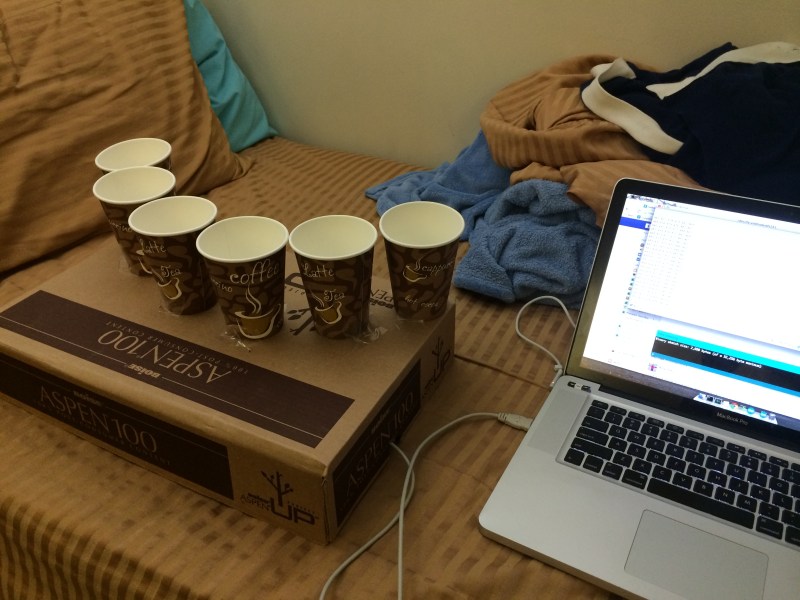Move aside Theremin, we have another crazy instrument that relies on its musicians to frantically wave their arms around to produce a beat. This is the Illumaphone.
[Bonnie Eisenman] recently took a course on Electronic Music, and for her final project she was allowed to basically do whatever she wanted — so she chose to create a custom musical instrument. It’s fairly simple on the hardware side, making use of coffee cups, an Arduino Uno, six photo-resistors, some alligator clips and a whole bunch of cardboard — but don’t let the lackluster parts list fool you, it actually works quite well for what it is!
Each coffee cup is a different note, and the amount of light that gets into the cup determines its volume and vibrato. It even auto-calibrates to the ambient light levels when it is first setup! The light level data is interpreted by the Arduino which then sends it to a laptop standing by, which uses a software called ChucK to synthesize the notes for output.
If this technology is too intense for you, you can always build a trusty soda-can Theremin instead.
















she never heard of Jean-Michel Jarre’s laser harp ?
https://www.google.ch/webhp?sourceid=chrome-instant&ion=1&espv=2&ie=UTF-8#q=jean%20michel%20jarre%20laser%20harp
Yea, but this doesn’t use lasers. How is is affected by variations in light?
Of course I’ve heard of the laser harp! Laser harps are very cool, but I wanted to try something significantly cheaper. Also, most laser harps I’ve seen don’t give you much control over volume, etc.
It actually responds to variations in light very well. Each time you start it, it auto-calibrates, and I’ve had good results in various settings (outdoors, indoors, with spotlight, in a classroom, etc).
Could you use changing room (environment) light as part of a performance? Also I was pointing out this obviously wasn’t a laser since it don’t have lasers.
Put a music shield on the Arduino and you don’t need the laptop.
You don’t need a music shield. There is a SimpeAudioPlayer example on Arduino website, which gives you an opportunity to play WAV directly from SD card.
Had a student (I teach at local Polytechnic) which did a infrared LED harp. Also had a problem with variations in light after calibration.
Yeah, eliminating the laptop is something I would love to do. But I still haven’t found a sound synthesis library that I like; a lot of examples seem to use WAV files or generate simple tones, which is very limiting. Would love some recommendations if you know of any libraries that manage it.
https://github.com/dzlonline/the_synth
or
http://sensorium.github.io/Mozzi/
https://github.com/dzlonline/the_synth
or
http://sensorium.github.io/Mozzi/